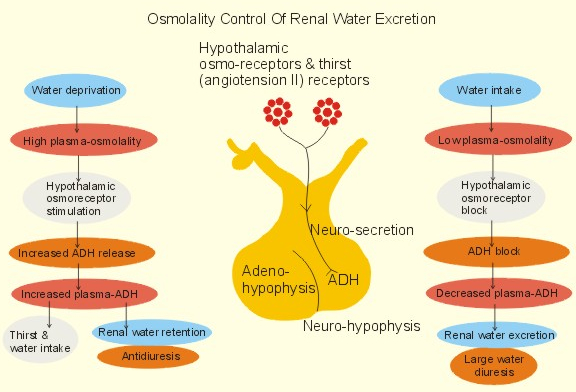Article Contents ::
SIADH or Syndrome of inappropriate ADH (AVP)
- There is excessive secretion of AVP resulting in passage of decreased volume of highly concentrated urine.
- There is water retention and decrease in plasma sodium and plasma osmolarity.
- It is called dilutional hyponatraemia.
- It may be asymptomatic or there may be headache, confusion, anorexia, nausea, vomiting, coma and convulsions, death.
Causes of SIADH are:
- · Head injury
- · Neoplasms
- · Infections of lungs
- · Abscess
- · Encephalitis
- · Tuberculosis
- · Cerebrovascular accidents
- · Multiple sclerosis
- · GB syndrome
- · Vasopressin
- · Oxytocin
- · Phenothiazines
- · Carbamazepines.
Treatment of SIADH
- Restriction of fluid intake to less than the loss through urine and insensible losses (sweat etc).
- The water intake from food is about 500 ml/day. Insens.ible loss is usually 500 ml/day.
- Liquid intake should be 500 mlless than the urinary output.
- IV infusion of hypertonic or 3% saline is given for rapid relief of symptoms.
- Very rapid correction of hyponatraemia should not be done as it can cause myelinolysis characterized by quadriparesis and ataxia.
- Demeclocycline (150–300 mg tidY.
- Fludrocortisone (0.05-0.2 mg orally bd).


